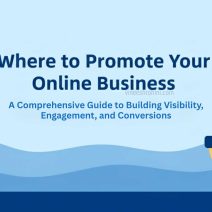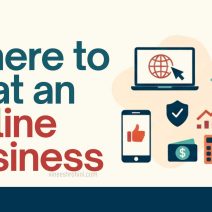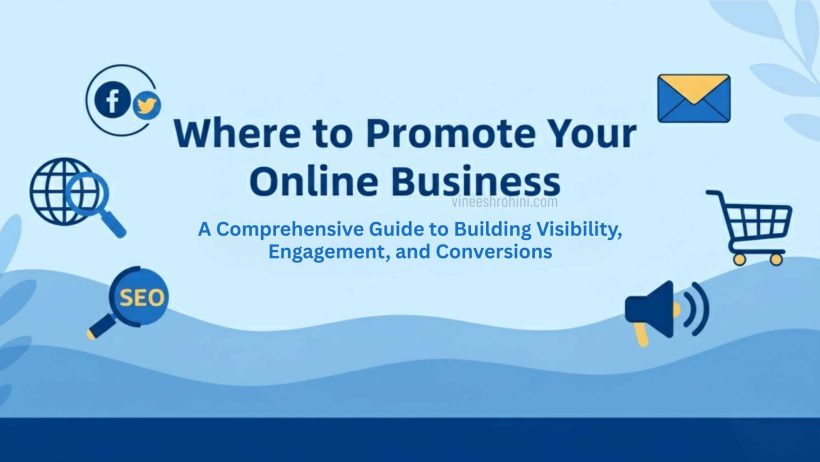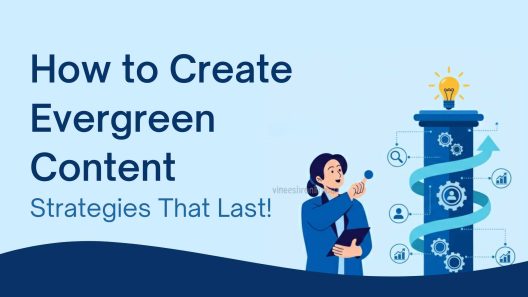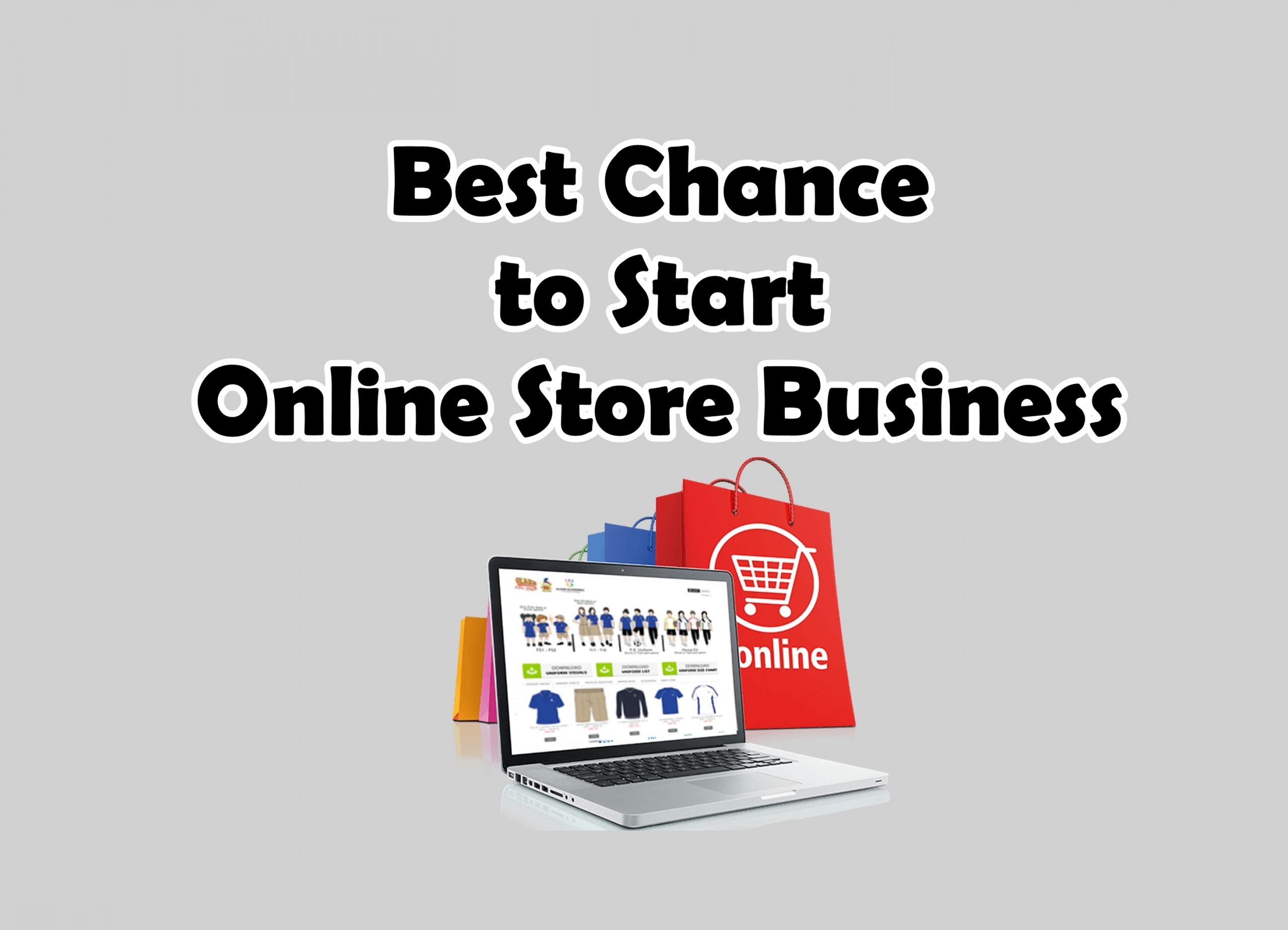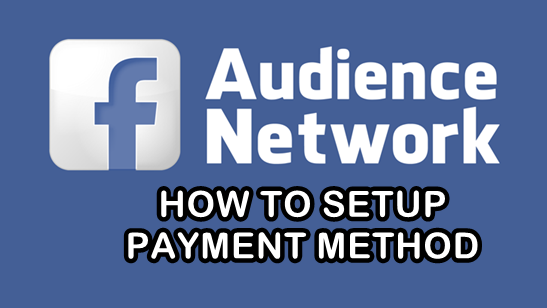Promote Online Business : In the fast-paced world of digital entrepreneurship, knowing where and how to promote your online business can be the difference between success and obscurity. With millions of startups launching every year and countless eCommerce stores competing for attention, standing out requires not just creativity but strategic planning. As we move into 2025, online business promotion has evolved far beyond traditional advertising and social media posting. It’s about data-driven marketing, authentic engagement, artificial intelligence visibility, and consistent brand storytelling.
Table of Contents
This comprehensive Guide explores every major channel, strategy, and platform where you can effectively promote your online business to gain visibility, build trust, and drive long-term growth.
Understanding the New Era of Online Business Promotion

The digital business ecosystem has undergone a massive transformation. Ten years ago, promotion largely meant social media ads and SEO blogging. But in 2025, digital discovery has become more fragmented yet more powerful. Consumers discover brands not only on G or FB but also on AI-driven platforms like ChatGPT, Gemini, and Perplexity. At the same time, user expectations have risen—people now want authenticity, personalization, and value before they engage with any brand.
To succeed in this environment, business owners must promote their online presence across multiple platforms while maintaining consistency in branding and messaging. Every promotion effort should serve three key objectives: building awareness, nurturing trust, and driving conversions. Let’s explore the most impactful platforms and strategies to achieve this.
Also Read : Top Online Businesses : That Make the Most Money in 2025 – Comprehensive Guide
1. Social Media Marketing: The Heartbeat of Digital Promotion
Social media is still the most direct and dynamic space to promote your business. With billions of users spending hours on platforms daily, it provides an opportunity to connect emotionally and visually with your target audience. However, in 2025, the strategy must evolve — it’s no longer about posting for the sake of it, but crafting platform-specific stories.
- Insta: These are visual-first platforms where short videos, reels, and behind-the-scenes content dominate. Use storytelling to humanize your brand — show your product journey, customer success stories, or team culture.
- FB: While younger audiences are shifting elsewhere, FB remains a top platform for community-building, niche targeting, and running affordable ad campaigns. Business pages, groups, and Marketplace listings offer organic exposure opportunities.
- LinkedIn: Essential for B2B businesses, freelancers, and consultants. Share insights, data, and professional content to build authority. LinkedIn’s algorithm favors consistent, value-based engagement over direct selling.
- YT: Still the king of long-form content. Create tutorials, reviews, or explainer videos optimized with keywords. YouTube videos also rank on G, making it a dual-impact platform.
- X (Twitter): Ideal for thought leadership, announcements, and engaging in trending conversations.
The best strategy is to focus on two to three platforms where your audience is most active and consistently share value-driven, interactive content.
2. Search Engine Optimization (SEO): Building Sustainable Visibility
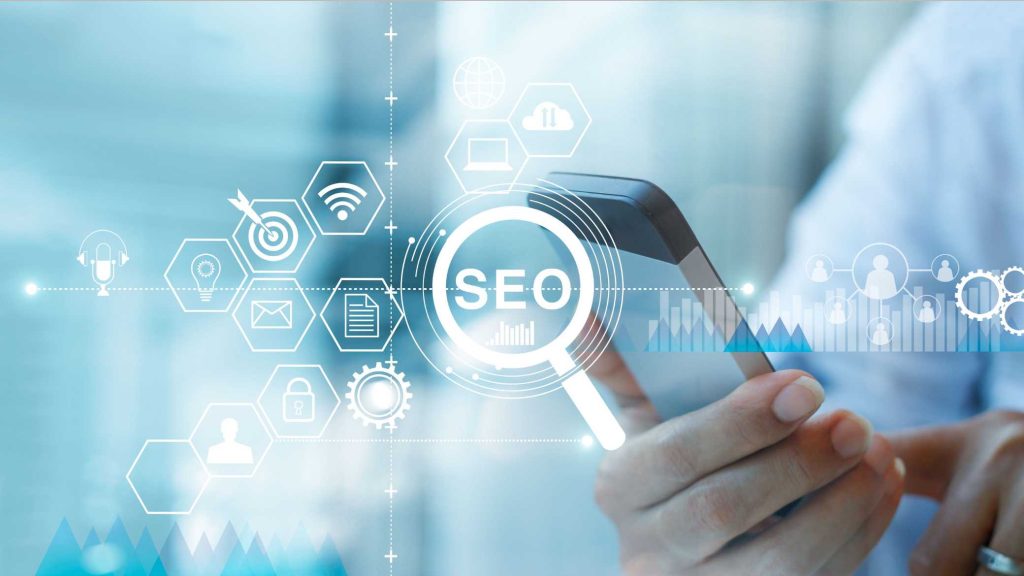
While social media drives immediate attention, SEO builds consistent, long-term visibility. Organic search traffic is one of the most trusted forms of online promotion because people find your brand naturally through search intent.
In 2025, SEO is evolving with AI integration and natural language understanding. G’s algorithms now prioritize expertise, experience, authority, and trust (E-E-A-T). To optimize your business:
- Conduct keyword research focused on buyer intent, not just volume.
- Create high-quality, in-depth content that solves real problems.
- Optimize technical SEO — fast loading, mobile-friendly design, schema markup, and secure HTTPS protocols.
- Build authoritative backlinks through guest blogging and partnerships.
- Optimize for AI-driven discovery. Generative search engines like ChatGPT and Gemini are becoming new visibility frontiers. Brands that appear in AI summaries or recommendations gain unmatched credibility.
SEO might take months to show results, but its compounding effect can outperform paid advertising in the long term.
3. Paid Advertising: Reaching the Right Audience Fast
Paid ads are still one of the fastest ways to promote your business and get measurable results. They allow you to target audiences based on demographics, behavior, and intent.
Popular paid promotion platforms include:
- G Ads: Best for capturing high-intent searchers actively looking for your products or services.
- Meta Ads (FB + Insta): Ideal for visual storytelling and lead generation.
- YT Ads: Powerful for brand awareness and storytelling.
- LinkedIn Ads: Excellent for B2B targeting and professional services.
- Native Ads and Display Networks: Help increase brand recall through contextual placements on blogs and news sites.
Success in paid advertising lies in constant testing. Run A/B tests on visuals, ad copy, and call-to-action. Retarget website visitors who didn’t convert, and use analytics to measure ROI.
4. Influencer Marketing: The New Word of Mouth
Influencer marketing continues to dominate digital promotion because it blends trust and reach. People are more likely to buy from someone they admire than from a corporate ad. In 2025, micro and nano influencers (with 10K to 100K followers) are the new growth engines because of their niche, loyal communities.
Collaborate with influencers who align with your brand’s identity. Allow them creative freedom to present your product authentically — whether through reviews, tutorials, or lifestyle content. Influencer platforms like Collabstr, Aspire, and Upfluence make finding and managing partnerships easier.
The secret to successful influencer marketing lies in authenticity. Choose creators who genuinely use and love your product — the impact will be far stronger than any polished advertisement.
5. Email Marketing: Personal Connection in the Digital Noise
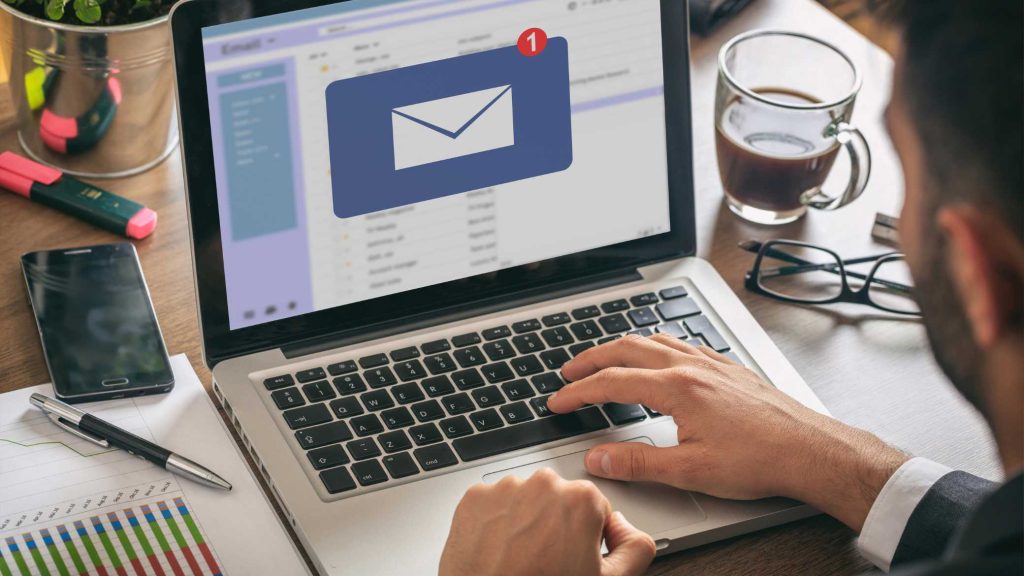
Email remains one of the highest ROI marketing tools. Despite being one of the oldest channels, it’s still powerful when done right. In 2025, automation and personalization are key.
Start by offering value in exchange for email sign-ups — free eBooks, webinars, discounts, or checklists. Segment your audience into groups based on interests or purchase behavior. Then, design personalized campaigns using tools like ConvertKit, Mailchimp, or Klaviyo.
Examples of email campaigns that convert include:
- Welcome emails introducing your brand.
- Abandoned cart reminders.
- Educational series explaining your products.
- Exclusive offers for loyal subscribers.
Email marketing builds long-term relationships and drives repeat purchases when combined with storytelling and consistency.
6. Content Marketing: Educate and Dominate
In the online world, content is the currency of trust. Every business, no matter how big or small, needs a content strategy that positions it as an expert.
Types of content that perform best in 2025 include:
- Blog posts: Detailed guides and how-to articles optimized for SEO.
- Videos: Educational explainers, product demos, and interviews.
- Infographics: Perfect for sharing complex information visually.
- Podcasts: Growing in popularity among professionals and entrepreneurs.
Quality content attracts search traffic, builds authority, and nurtures audience trust. Use analytics tools to identify what content resonates most and repurpose it across formats — for instance, turn a blog into a YouTube script or carousel post.
7. Online Marketplaces: Tapping Into Ready-Made Traffic
If you sell products, promoting them on popular online marketplaces gives you instant access to massive customer bases. Platforms like Amazon, Flipkart, Meesho, Etsy, and eBay already attract millions of daily visitors.
Optimize your product listings with keyword-rich titles, engaging images, and detailed descriptions. Encourage reviews and respond to customer feedback promptly. You can also use sponsored product ads to boost your visibility within the platform.
Even service-based businesses can use platforms like Fiverr, Upwork, or Freelancer to gain exposure and build credibility before expanding independently.
8. Affiliate Marketing: Grow with Partnerships
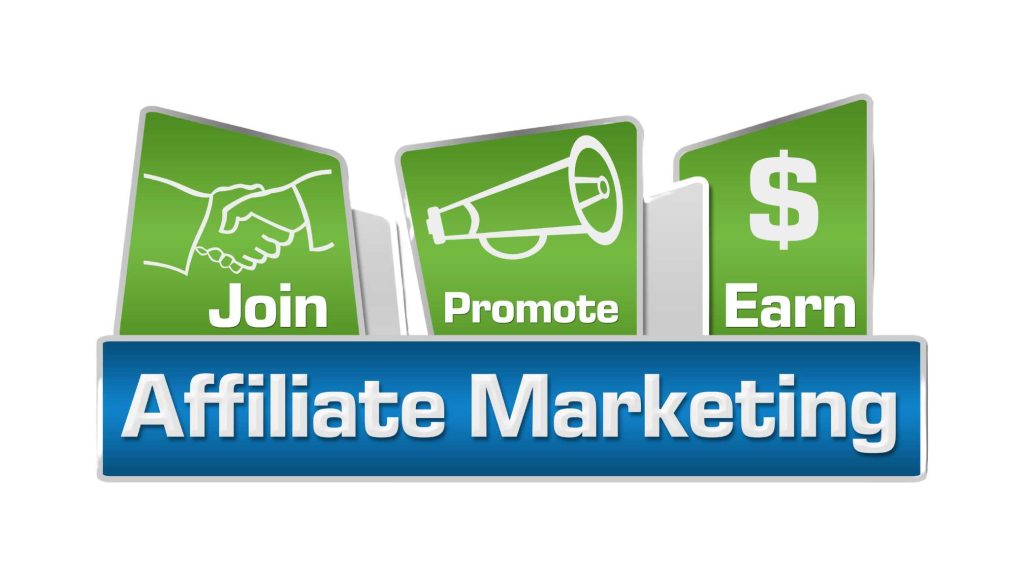
Affiliate marketing allows others to promote your business for a commission, giving you cost-effective exposure. You only pay when a sale or lead occurs, making it one of the most efficient promotion models.
You can join affiliate networks like ShareASale, Impact, or PartnerStack or run your own affiliate program using software like Tapfiliate or GoAffPro. Affiliates often include bloggers, YouTubers, and content creators who naturally integrate your offerings into their content.
Buy Now : Ecommerce Website
This strategy builds scalable growth and brand advocacy without heavy ad spend.
9. Forums, Q&A Sites, and Online Communities
Promoting your brand on platforms like Reddit, Quora, and specialized forums builds organic awareness through authentic conversations. Answering questions related to your niche demonstrates expertise and subtly introduces your business as a credible solution.
Join niche communities on Discord, Telegram, or FB Groups and engage regularly. Avoid hard selling; instead, focus on providing insights, tools, or solutions. Over time, this approach drives meaningful, trust-based engagement.
10. AI and Voice Search Optimization
With the rise of AI assistants and voice search, businesses must optimize for conversational discovery. Tools like ChatGPT, Perplexity, and Gemini are reshaping how users interact with information.
Create FAQ-style content and optimize for natural language queries. Implement schema markup to help AI understand your data better. Being referenced in AI-generated responses can dramatically increase your visibility and credibility in 2025’s digital landscape.
11. Strategic Collaborations and Cross-Promotions

Partnering with complementary brands can multiply your exposure. For instance, a digital marketing agency could collaborate with a web hosting company for joint webinars, giveaways, or bundled offers.
Cross-promotions help you access new audiences without heavy marketing spend. Both brands share the benefits of expanded reach and credibility.
12. Local Directories and Online Reviews
Even for online-only businesses, local listings enhance trust and visibility. Claim your G Business Profile and ensure accurate business details, images, and service descriptions. Encourage satisfied clients to leave reviews — they boost your search ranking and influence buying decisions.
Sites like Trustpilot, Yelp, and Clutch also play a key role in establishing online reputation, especially for service-based companies.
13. PR and Media Coverage
Public relations can take your brand visibility to the next level. Getting featured in reputable news outlets, blogs, and online magazines adds authority and backlinks for SEO.
Pitch your success stories, unique products, or expert opinions to journalists. Use platforms like HARO (Help a Reporter Out) or PRWeb to connect with media outlets.
14. Webinars, Live Streams, and Events
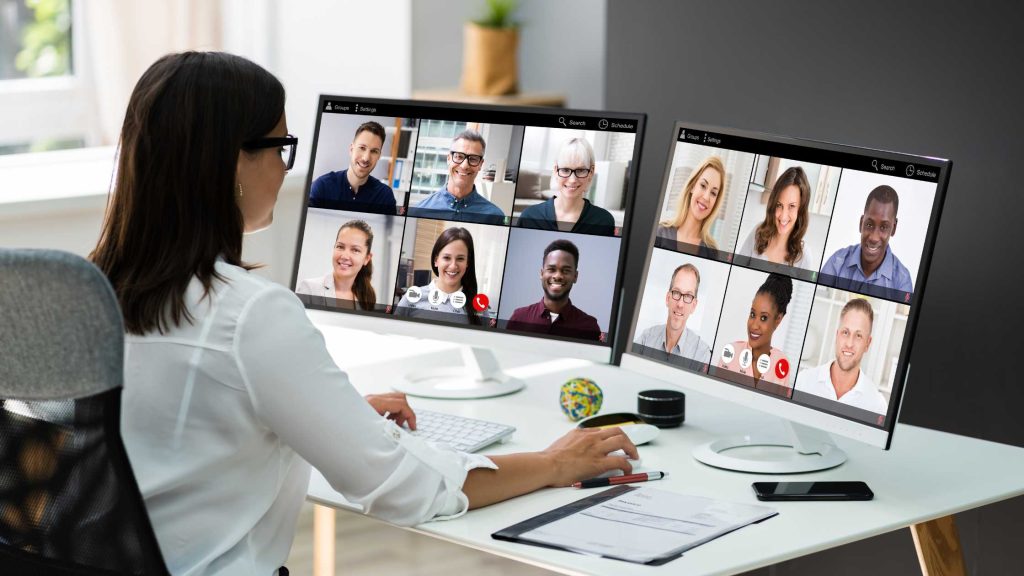
Live interaction builds trust faster than static content. Host webinars, workshops, or YouTube live sessions to educate your audience and promote your business.
Webinars are particularly effective for B2B marketing, while live product demos work well for eCommerce brands. Engagement tools like polls, chat Q&A, and giveaways make sessions more interactive and memorable.
15. Mobile App Promotion (If Applicable)
If your business has a mobile app, promote it through App Store Optimization (ASO), paid installs, influencer partnerships, and user review incentives. Create explainer videos that highlight app features and encourage referrals through reward systems.
16. Podcast Appearances and Audio Promotion

The rise of podcasting presents a golden opportunity for brands to reach professional and engaged audiences. You can start your own podcast to discuss niche-related topics or appear as a guest on others. Sharing real experiences and insights positions you as a trusted authority.
17. Data Analytics and AI Tools
No promotion campaign is complete without measuring performance. Use tools like G Analytics 4, Hotjar, Ahrefs, or HubSpot to analyze your audience’s behavior and optimize your strategy. AI tools can now predict trends, identify underperforming campaigns, and even suggest ideal content timing for better engagement.
Data-driven decision-making ensures that every marketing rupee or dollar spent delivers maximum returns.
Conclusion
Promoting an online business in 2025 demands a multi-channel, adaptive strategy. There’s no single “magic platform” — success comes from combining organic efforts, paid campaigns, influencer collaborations, and AI-driven visibility. The modern consumer values authenticity, relevance, and trust more than flashy ads.
Buy Now : Ready Made Digital Store with 100 Products
Businesses that focus on consistent storytelling, quality content, and community engagement will not only attract attention but also sustain growth. Whether you’re a small entrepreneur or an established eCommerce brand, the future of online promotion lies in connecting — not just convincing. Build relationships, educate your audience, and use technology intelligently. Over time, your online business will evolve into a trusted digital brand that stands strong amidst changing algorithms and trends.
Disclaimer : This article is for informational and educational purposes only. It does not constitute business, marketing, or financial advice. Please conduct your own research or consult a professional before making any business decisions.
Keywords : Promote Online Business – Where to Promote Online Business
